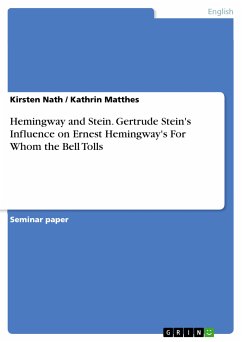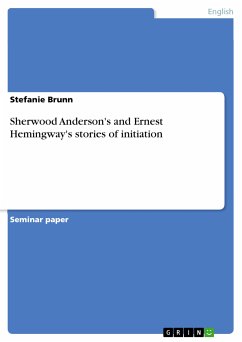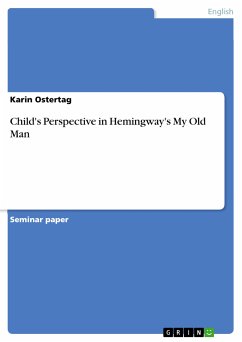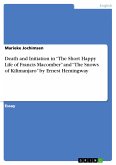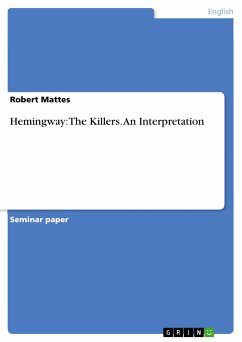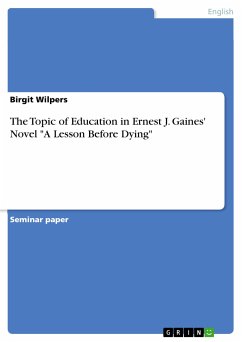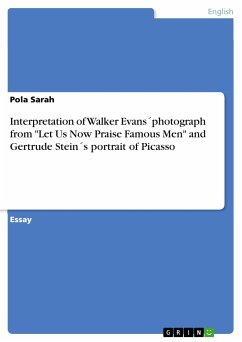Seminar paper from the year 2005 in the subject American Studies - Literature, grade: 2,7, University of Hamburg (Institut für Anglistik und Amerikanistik), course: Proseminar: Hemingway: The Spanish Period, language: English, abstract: “I wrote some pretty good poems lately in Rhyme. We love Gertrude Stein”, wrote Ernest Hemingway in a letter to Sherwood Anderson in 1922. Hemingway had only recently met Stein in Paris following a letter of recommendation Stein had received from Anderson. Gertrude Stein was an American expatriate who had been living in Paris for eighteen years. She was well-known among contemporary artists such as Picasso, Matisse, Cézanne, Henry James, Ezra Pound, and F. Scott Fitzgerald. Her salon in 27, Rue de Fleurus was a private gallery of modern art and, consequently, a well-liked meeting-point for discussions on modernism. Stein herself had decided to experiment with the English language instead of writing common fiction. She practiced a kind of ‘cubist writing’ which was based on rhythm, rhyme and repetition rather than on a sensemaking plot. Nevertheless, she gave helpful advice to other writers when needed and was mentor for some of them. Hemingway, being one of those who often frequented her salon, began to admire Stein and her work; he soon realized that he could learn much from her. He was impressed by her “continuous present tense and her steady repetition of key phrases that created meanings larger than the words themselves” and considered it useful to acquire those techniques. Hemingway asked for and gladly accepted Stein’s advice for a few years but their relationship slowly crumbled because both of them felt insulted by the other. In the later years, Hemingway began to even deny the influence Stein had on him. This paper will deal with Gertrude Stein’s influence on Hemingway, focusing on his style and the Spanish woman Pilar in For Whom the Bell Tolls(FWBT), published in 1940. While Stein’s general influence on Hemingway has been discussed and proven many times and her specific influence on this novel has only been seen in the figure of Pilar or in parts of Hemingway’s style, Stein’s overall influence on FWBT has not yet been primary subject of research. However, Robert Jordan’s utterance “A rose is a rose is an onion” struck us as being very straight forward and thus led us to further investigation on the significance of Gertrude Stein in FWBT.
Bitte wählen Sie Ihr Anliegen aus.
Rechnungen
Retourenschein anfordern
Bestellstatus
Storno

